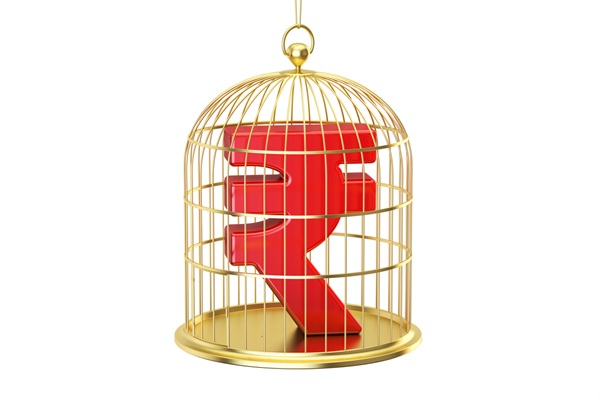.png)
Asia Trades Higher on Fed Williams’ Rate-Cut Hint; Caution Persists Over Ukraine Plan
Here’s your quick read to start the day: a chatty, no-fuss look at overnight moves, the big story, what’s on the docket, and the tickers you need to watch.

November 24, 2025 at 1:39 AM IST
GLOBAL MOOD: Cautiously Risk-on
Drivers: US–Ukraine Peace Plan Tension, Fed Policy Split
Asia-Pacific markets opened cautiously higher as dovish comments from New York Fed President John Williams revived expectations of a possible third rate cut this year. Still, gains remained restrained by geopolitical uncertainty over the US-drafted Ukraine peace plan and lingering divisions within the Federal Reserve.
TODAY’S WATCHLIST
THE BIG STORY
The Federal Reserve faces its own divide. Boston Fed President Susan Collins warned she is “hesitant” to support a December rate cut, arguing that policy is already “mildly restrictive” and that inflation and labour-market risks remain “on both sides.” Her caution contrasts sharply with New York Fed President John Williams, who told US interest rates could fall “in the near term” without jeopardising the inflation goal, signalling there is still room for another adjustment toward neutral. Williams’ stance pushed markets to price in nearly 60% odds of a December cut, reversing earlier expectations of a pause.
Data Spotlight
US consumer sentiment inched up in November after the shutdown ended, with the University of Michigan index rising to 51.0 from a preliminary 50.3, though it remained the second lowest on record. The Current Economic Conditions Index tumbled 12.8% to a historic low of 51.1, driven by sharp deterioration in personal finances and durable goods buying conditions. Expectations improved only marginally, rising to 51.0, while sentiment among households with larger stock holdings weakened again by month-end as equity markets slid. Inflation expectations showed mixed signals: one-year expectations eased to 4.5%, while long-term expectations softened to 3.4%, both still above pre-tariff norms.
Manufacturing conditions also lost momentum, with the S&P Global flash PMI slipping to 51.9, a four-month low, as tariff-driven price pressures curbed demand and pushed inventories higher, raising concerns about a drag on broader economic growth.
Takeaway:
WHAT HAPPENED OVERNIGHT
- US stocks rebound fades as AI names drag
- US stocks rebounded on Friday with all major indices ended up, after NY Fed’s Williams hinted policy could move closer to neutral.
- Markets lifted the odds of a December rate cut supporting early risk appetite.
- Alphabet rose 3.3% on Gemini 3 momentum and capex plans; Meta gained 0.9% and Intuit rallied post-earnings.
- Strength faded later as AI valuations came under pressure with shares of Nvidia, Microsoft, Broadcom, and AMD fell over 1%.
- US stocks rebounded on Friday with all major indices ended up, after NY Fed’s Williams hinted policy could move closer to neutral.
- US Treasury yields fall as dovish Fed bets build
- The 10-year US Treasury yield fell to 4.06%, down 4 basis points, the lowest since late October, as markets increased expectations of a December Fed rate cut.
- Dovish tone from NY Fed President John Williams, who said there is “room for further adjustment” toward neutral, boosted rate-cut odds.
- Fed Governor Miran also noted recent data is pushing policy in a more dovish direction.
- Dallas Fed President Lorie Logan warned another December cut would be “difficult” without clearer evidence of rapidly cooling inflation or labour conditions.
- The 10-year US Treasury yield fell to 4.06%, down 4 basis points, the lowest since late October, as markets increased expectations of a December Fed rate cut.
- US Dollar edges higher as rate-cut bets rise
- The dollar index neared 100.3, its strongest level since mid-May, and registered 1% weekly gain, its first in three weeks.
- Gains were supported by risk-off moves in AI stocks and crypto, boosting safe-haven demand.
- Traders increased December Fed rate-cut bets after NY Fed President John Williams signalled room to ease as labour conditions soften.
- The dollar fell slightly against the yen as Japanese officials intensified verbal intervention to slow the currency’s slide.
- The dollar index neared 100.3, its strongest level since mid-May, and registered 1% weekly gain, its first in three weeks.
- Crude oil prices slips to one-month lows
- Brent crude prices fell around 1%, with Brent down to $62.56 and WTI to $58.06, both at one-month lows.
- The decline followed US efforts to push a Russia-Ukraine peace deal, raising expectations of improved global supply.
- Uncertainty over US interest rates and weaker risk appetite added to the downside pressure.
- Brent crude prices fell around 1%, with Brent down to $62.56 and WTI to $58.06, both at one-month lows.
Day’s Ledger
Economic Data
- Singapore Inflation Rate
- German Ifo Business Climate Index
- US Oct Industrial Production Data
Corporate Actions
- Eris Lifesciences to consider fund raising
- Finkurve Financial to consider fund raising
- Jul—Sep earnings: Siemens Energy, Supreme Infrastructure
Policy Events
- German Buba President Nagel Speaks
- ECB Lagarde Speech
Tickers to Watch
- OYO ASSETS raises ₹125 crore in fresh funding round led by InCred
- TOYOTA recalls 11,529 Urban Cruiser Hyryders over dashboard component issue
- MARICO'S digital brands cross ₹1,000 cr annual recurring revenue mark
- RITES to export in-service diesel locomotives to South Africa: CMD Mithal
- SPICEJET resumes online services after technical glitch on website
- ADANI Group JV firm acquires Trade Castle Tech Park for ₹231 crore
- Uflex to invest over ₹700 cr to expand packaging film capacity in Karnataka
- ADANI ENTERPRISES sells stake worth $279 million in AWL Agri Business
Must Read
- US EXIM to invest $100 billion to secure critical mineral supplies: Report
- Board of Trade to meet on Tuesday to discuss strategies to boost exports
- UK unveils critical minerals strategy to cut reliance on foreign supply
- Textile industry sees labour codes as key to export growth in US, EU mkts
- Stellantis India CEO says GST 2.0 to push car industry growth to 5%
- BHP Group has made renewed bid approach to Anglo American: Report
- Haircuts touch 67% under IBC as creditor recovery stays low till Sep 2025
- Piyush Goyal wraps up Israel trip – FTA, investment, innovation discussed
- US Retail Sales Are Proving Resilient While Risks Mount
- US Inflation Traders to Use Untested Fallbacks for Missing CPI
See you tomorrow with another edition of The Morning Edge.
Have a great trading day
India’s Scientific Diaspora: The Missing Engine of Our Knowledge Revolution
India’s scientific diaspora is one of the world’s most accomplished—leading labs, shaping breakthroughs, and driving frontier research across AI, biotech, and physics. Yet, while nations like South Korea, China, and Israel turned their diasporas into engines of scientific transformation, India still relies on outdated regulations, constrained university autonomy, and fragmented research funding.
Former Finance Secretary Dr Arvind Mayaram writes, what stops India from building globally competitive, autonomous research universities that attract our diaspora back into the system. Can India modernise its regulatory and funding architecture enough to support true cross-border collaboration?



